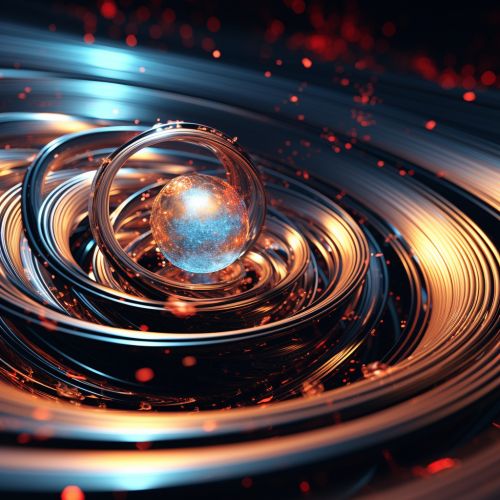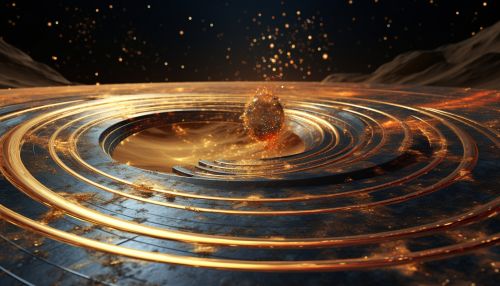Loop Quantum Gravity
Introduction
Loop Quantum Gravity (LQG) is a theory that attempts to merge quantum mechanics and general relativity. It is a type of quantum gravity theory, which aims to describe the force of gravity according to the principles of quantum mechanics. Unlike string theory, another prominent quantum gravity theory, LQG does not require extra dimensions or supersymmetry. Instead, it proposes that space and time are quantized, similar to how energy is quantized in quantum mechanics.


Background
The development of LQG began in the late 1980s and early 1990s by physicists such as Carlo Rovelli, Lee Smolin, and Abhay Ashtekar. The theory builds upon earlier attempts to quantize gravity, notably the canonical quantum gravity approach developed by Bryce DeWitt and others. LQG also incorporates ideas from topological quantum field theory and the theory of spin networks.
Theoretical Foundations
Quantum Mechanics and General Relativity
The two pillars upon which LQG is built are quantum mechanics and general relativity. Quantum mechanics is a theory that describes the behavior of particles at the smallest scales, while general relativity is a theory of gravity that describes the behavior of objects at the largest scales. The challenge of quantum gravity is to reconcile these two theories, which have fundamentally different descriptions of reality.
Canonical Quantum Gravity
Canonical quantum gravity is an approach to quantum gravity that attempts to quantize the gravitational field in a way that is similar to how other fields are quantized in quantum mechanics. This approach was first developed in the 1960s and forms the basis for LQG. The key idea is to represent the gravitational field as a set of quantum operators on a Hilbert space, a concept from quantum mechanics.
Spin Networks
Spin networks are a mathematical tool used in LQG to describe the quantum state of the gravitational field. They were first introduced by Roger Penrose in the 1970s in a different context, and later incorporated into LQG by Rovelli and Smolin. In LQG, spin networks are used to represent the quantum state of space itself.
Key Concepts
Quantization of Space and Time
One of the key predictions of LQG is that space and time are not continuous, but are instead made up of discrete, indivisible units, or "quanta". This is similar to how energy is quantized in quantum mechanics. According to LQG, the fabric of space itself is made up of tiny, interconnected loops, which give the theory its name.
Loop States and Spin Networks
In LQG, the basic states of the gravitational field are represented by loops. These loops can be combined to form spin networks, which provide a basis for the Hilbert space of quantum states. Each node of a spin network represents a volume of space, while each link represents an area.
The Hamiltonian Constraint
The Hamiltonian constraint is a key part of the dynamics of LQG. It is a mathematical condition that must be satisfied by the physical states of the gravitational field. Solving the Hamiltonian constraint is one of the main challenges in LQG.
Current Status and Future Directions
LQG is still a work in progress and many aspects of the theory are still being developed. One of the main challenges is to derive the correct low-energy limit of the theory, which should reproduce general relativity. Another challenge is to find a satisfactory quantum theory of cosmology based on LQG.
Despite these challenges, LQG has made significant progress and has contributed to our understanding of quantum gravity. It has also inspired other approaches to quantum gravity, such as spin foam models and group field theory.
See Also
Quantum Gravity Canonical Quantum Gravity String Theory Quantum Cosmology
